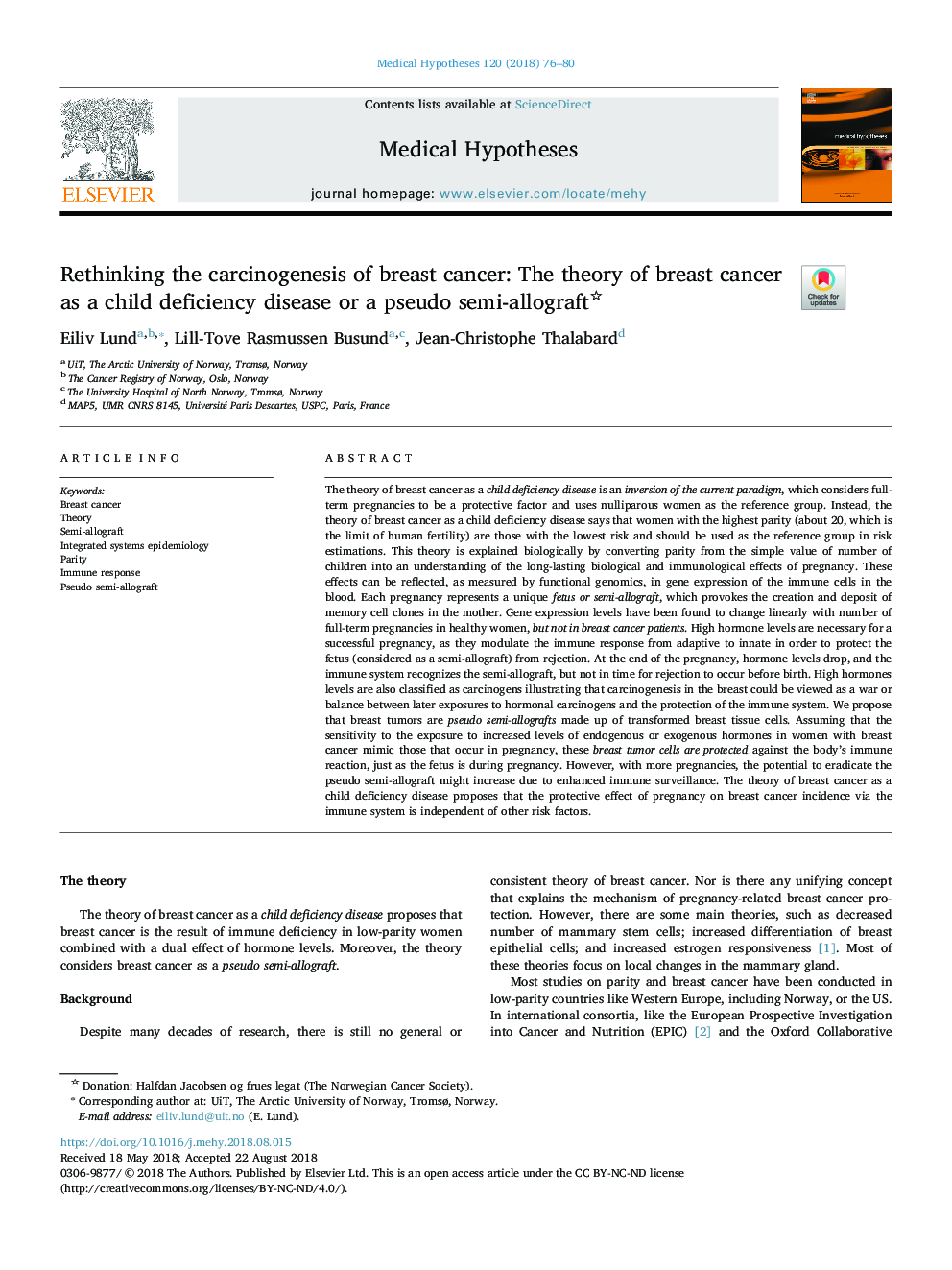| Article ID | Journal | Published Year | Pages | File Type |
|---|---|---|---|---|
| 9954740 | Medical Hypotheses | 2018 | 5 Pages |
Abstract
The theory of breast cancer as a child deficiency disease is an inversion of the current paradigm, which considers full-term pregnancies to be a protective factor and uses nulliparous women as the reference group. Instead, the theory of breast cancer as a child deficiency disease says that women with the highest parity (about 20, which is the limit of human fertility) are those with the lowest risk and should be used as the reference group in risk estimations. This theory is explained biologically by converting parity from the simple value of number of children into an understanding of the long-lasting biological and immunological effects of pregnancy. These effects can be reflected, as measured by functional genomics, in gene expression of the immune cells in the blood. Each pregnancy represents a unique fetus or semi-allograft, which provokes the creation and deposit of memory cell clones in the mother. Gene expression levels have been found to change linearly with number of full-term pregnancies in healthy women, but not in breast cancer patients. High hormone levels are necessary for a successful pregnancy, as they modulate the immune response from adaptive to innate in order to protect the fetus (considered as a semi-allograft) from rejection. At the end of the pregnancy, hormone levels drop, and the immune system recognizes the semi-allograft, but not in time for rejection to occur before birth. High hormones levels are also classified as carcinogens illustrating that carcinogenesis in the breast could be viewed as a war or balance between later exposures to hormonal carcinogens and the protection of the immune system. We propose that breast tumors are pseudo semi-allografts made up of transformed breast tissue cells. Assuming that the sensitivity to the exposure to increased levels of endogenous or exogenous hormones in women with breast cancer mimic those that occur in pregnancy, these breast tumor cells are protected against the body's immune reaction, just as the fetus is during pregnancy. However, with more pregnancies, the potential to eradicate the pseudo semi-allograft might increase due to enhanced immune surveillance. The theory of breast cancer as a child deficiency disease proposes that the protective effect of pregnancy on breast cancer incidence via the immune system is independent of other risk factors.
Related Topics
Life Sciences
Biochemistry, Genetics and Molecular Biology
Developmental Biology
Authors
Eiliv Lund, Lill-Tove Rasmussen Busund, Jean-Christophe Thalabard,
